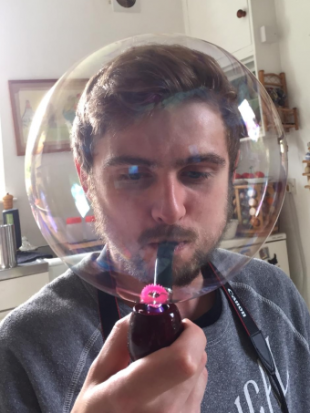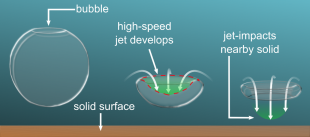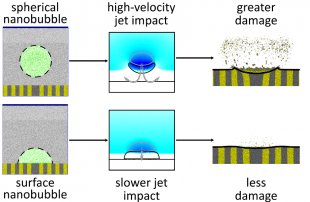Applications in Diverse Fields
Engineering and Electronics
In engineering applications, cavitation erosion control involves studying the formation and collapse of bubbles formed due to a sudden pressure drop, which can result in structural damage to nearby solid materials. Proper design and control of cavitation helps prevent erosion and damage to turbomachinery, such as propellers and turbines. This phenomenon can be exploited with careful management of the collapsing process, such as in ultrasonic cleaning devices. High-frequency sound waves induce these bubbles' rapid formation and collapse, generating tiny shockwaves. These shockwaves, in turn, help dislodge dirt and contaminants from various surfaces.
Bubbles form during boiling, like when heating a pan of water. One of the most practical uses of vapour bubbles lies in heat transfer and cooling systems since they dissipate heat effectively, preventing electronic devices like microprocessors from overheating. Additionally, the oil and gas industry benefits from bubbles in enhanced oil recovery. Injecting vapour or gas into oil reservoirs reduces the oil's viscosity and increases its flow, making extraction more efficient.
Healthcare
Microscale bubbles, or microbubbles, filled with gas are valuable contrast agents in medical ultrasound imaging. When exposed to ultrasound, they vibrate at their resonant frequency and re-emit a strong signal that can enhance the visibility of blood vessels and diseased/cancerous tissues, significantly aiding diagnostic procedures. Micro and nanobubbles are also crucial in drug delivery systems, acting as carriers for drugs, ferrying them to specific sites within the body. This process is precise, using ultrasound or other external stimuli to induce their high-speed collapse (similar to ultrasonic cleaning), resulting in increased permeability of the targeted cells and improved uptake in drug delivery.
By a similar process, bubbles are also being used to disinfect bacteria and remove contaminant particles in waste-water treatment. Bubbles are also improving water-treatment processes in Advanced Oxidation Processes (AOPs), which utilise ozone gas to improve taste and odour issues without the need for chlorine. Ozone degrades very quickly if not appropriately contained, so AOPs can become expensive to run if the ozone gas is simply streamed into the water. Instead, ozone is injected into nanobubbles, which gradually releases the gas over a longer timescale and improves the overall efficiency of the treatment.
Our research
Bubble growth and cavitation are used in various industries to improve heat transfer processes, medical imaging resolution, drug delivery, and waste-water treatment. Our research develops the understanding and control of nanobubble growth dynamics, allowing researchers and engineers to refine these technologies down to the nanoscale to improve system efficiencies and efficacies.
Despite their small size and unassuming nature, bubbles play a significant role in a diverse range of industries and scientific research. Their ability to manipulate heat transfer, enhance process efficiencies, and hit precise microscale targets has made them invaluable in various applications. Our research explores more innovative and exciting uses for these tiny nanobubbles as part of the ongoing nanotechnology revolution.





